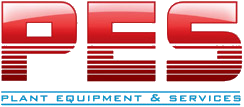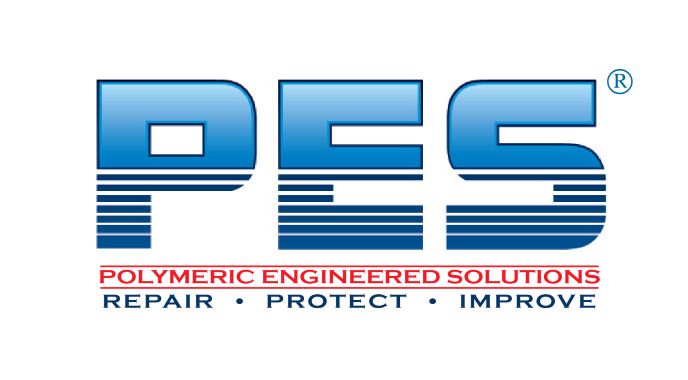PES-CHEM 512 UCEN 194 is a high build solvent-free high functionality epoxy novalac coating designed to provide outstanding chemical and corrosion protection of steel and concrete structures at elevated temperatures.
Surface Preparation
1. Metallic Substrates
All oil and grease must be removed from the surface of the repair using an appropriate cleaner such as MEK.
For optimum performance, the surface should be abrasive blasted to ISO 8501/4 Standard SA2.5 (SSPC SP10/NACE 2) and a minimum blast profile of 75 microns (3 mil) using an angular abrasive. Once blasted clean, the surface must be degreased and cleaned using MEK or a similar type of material. All surfaces must be coated before gingering or oxidation occurs.
PLEASE NOTE: For salt contaminated surfaces the area must be abrasive blast cleaned as mentioned above and left for 24 hours to allow any ingrained salts to come to the surface. After this 24 hour period the surface must be washed with MEK prior to brush blasting to remove the surface salts. This process must be repeated until all ingrained contaminants have been sweated out of the surface.
Where abrasive blast cleaning is not possible (excluding salt contaminated surfaces) the surface should be roughened by MBX, needle gun or grinding. Under these conditions adhesion levels will not be optimal although still satisfactory for most applications.
2. Concrete
Remove any contamination and lightly abrasive blast or scarify taking care not to expose the aggregate before application of PES-CHEM 501 CRSG. Allow new concrete to cure for a minimum of 21 days and likewise treat to remove any surface laitance before coating. For optimum results on damp concrete, condition with PES-CHEM 505 Damseal. Where the concrete is dry but highly porous, it is recommended to condition with PES-CHEM 503 SPEP.
Mixing and Application
Warm the Base component to 15-25°C (60-77°F) before mixing and do not apply when the ambient or substrate temperature is below 5°C (40°F) or less than 3°C (37°F) above the dew point.
Poor approximately half of the contents of the Activator unit into the Base container and mix carefully using a spatula. Once the two materials have been blended, add the remainder of the Activator ensuring that as much material is drained from the Activator container as possible. Mix the two components together until they are streak-free. The material, once fully mixed, has an application of time of 15-20 minutes at 20° (68°F). THis time will be extended at lower temperatures and shortened at higher ones.
Apply the mixed material onto the prepared surface by brush or applicator tool. This should be in two coats at a target thickness of 300-400 microns (12-16 mil) per coat. Apply the second coat as soon as possible after the first coat is dry and not in excess of 6 hours. Where the maximum over-coating interval is exceeded, the first coast should be sweep blasted and cleaned prior to over-coating.
Where small volume mixes are required, the mixing ration 4:1 by volume or 5.34:1 by weight.
For spray application, in order to achieve atomization when spraying, heat should be applied to both Base and Activator components as follows:
- Base: 50-60°C (120-140°F)
- Activator: 35-40°C (95-105°F)
Trace heating on lines should be maintained at 45-50°C (115-120°F)
Dependent on the pump ratio, adjust the compressed air pressure to give a tip pressure of 4200psi at the tip. Spray using a 21-23 thou tip.
Spray apply the material in sufficient passes to achieve a minimum thickness of 500 microns (20mil) checking the film thickness regularly with a wet film thickness gauge and brushing out the test marks.
Coverage Rates
4ltrs (1.25 US gallons) of fully mixed product will give the following coverage rates:
- 11.44m² at 350 microns – 123ft² at 14mil
16ltrs (4.2 US gallons) of fully mixed product will give you the following coverage rates:
- Brush or roller application: 46m² at 350 microns – 492ft² at 14mil
- Spray application: 32m² at 500 microns – 344ft² at 20mil
Please note that the coverage rates quoted are theoretical and do not take into consideration the profile or condition of the surface being repaired.
Cure Times
At 20°C (69°F) the applied materials should be allowed to harden for the times indicated below before being subjected to the conditions indicated. These times will be extended at lower temperatures and reduced at higher temperatures:
- Usable life – 15-20 minutes
- Movement without load or immersion – 6 hours
- Light loading – 12 hours
- Full loading/water immersion – 4 days
- Chemical Contact – 7 days
For Optimum Performance
After an initial curing period of at least 12 hours at 20°C (68°F), raising the cure temperature progressively to 60 – 80°C (140-175°F) for up to 8 hours will result in improved mechanical, thermal and chemical resistance properties.
Pack Sizes
This product is available in the following pack sizes:
- 1ltr (0.25 US gallons)
- 4lts (1.25 US gallons)
- 16ltrs (4.2 US gallons)
Color
- Mixed material – Dark Grey or Red
- Base component – Dark Grey or Red
- Activator component – Amber
Over-Coating Times
- Minimum – the applied material can be over-coated as soon as it is touch dry.
- Maximum – the over-coating time should not exceed 6 hours.
- Where the maximum over-coating time is exceeded, the material should be allowed to harden before being abraded or flash blasted to remove surface contamination.
Storage Life
If unopened and stored in normal, dry conditions (15-30°C / 60-86°F), 5 years is the storage life.
Technical Data and Performance
- Hardness Shore D ASTM D2240 – 86
- Compressive Strength ASTM D695 – 592kg/cm² (8400 psi)
- Flexural Strength ASTM D790 – 480kg/cm² (6800 psi)
- Tensile Shear Adhesion (mild steel) ASTM D1002 – 188kg/cm² (2650 psi)
- Corrosion Resistance (ASTM B117) – >1000 hours
Please see our PES-CHEM 512 UCEN Specification article for further technical and performance data.
For more information about PES 512, don’t hesitate to contact us here at PES Solutions with the link below!


Amber Clay liked this on Facebook.